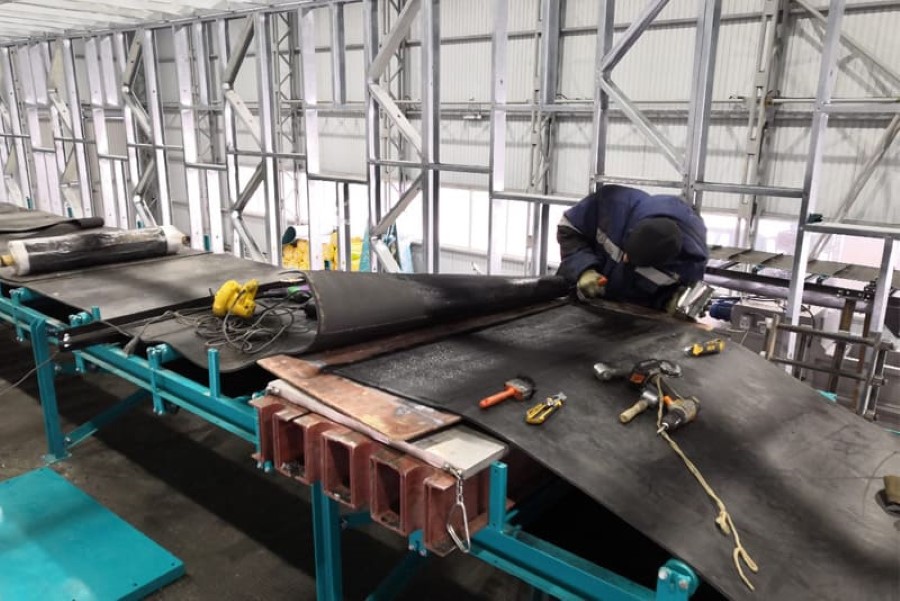Why the conveyor breaks - the main causes and ways to eliminate them

Due to their successful application, belt conveyors can be ranked among the most demanded equipment in the industry. They are often installed in commercial warehouses, ensuring the uninterrupted transportation of a variety of goods – in piece compact packages and bulk.
Varieties of universal movement mechanisms
Their widespread use is based on high performance. Plus the possibility of delivering goods over decent distances with adjustable speed. Installation variations imply work not only in a horizontal position. The angle of inclination of the conveyor can be changed if necessary.
Additional options may include wheels for movement, telescopic mechanisms that change the length of the conveyor belt, electrical cabinets that create a special microclimate for goods. There are the following types of equipment:
- Troughed warehouse conveyors with roller bearings.
- Straight conveyors of automated production lines with stationary floor or suspended installation.
- Slanted type.
- Mobile with wheels
The quality of installation is the key to stable and long-term operation
The advantages of their use are manifested in the reliability of the equipment in operation. And this directly depends on the quality of all its components, competent assembly on site. The installation of the conveyor is carried out by specialists according to certain rules. It starts with a breakdown of the axes. Then comes the turn of the drive station.
Since failures are too often dependent on the fastening technology, this stage of installation is given special attention. Design features dictate the choice of fastener variations. The pins are used when the base is perfectly stable. Otherwise, resort to spacers.
There is a variant of foundation installation in the presence of a concrete base. Then, in the installation work, they proceed to the stav. And sequentially – to the tail section. Any permitted axle bending will result in malfunctions that disrupt the smooth functioning of the entire transport system due to the flying belt.
Variants of common failures of belt conveyors
Each detail and all nodes are carefully cleaned and washed. After that, cracks on them, metal potholes are easily detected and the presence of such defects can be checked. Preliminary preparation includes accurate measurements. This is the most important part of troubleshooting. If you ignore it, the following problems occur:
- Conveyor frame warp.
- Axial deflection with insufficient tape splicing.
- Calculation roller skew – vertical, horizontal.
- Parallelism between the axes of the drive and tension drum has not been achieved.
- Violation of the horizontal straightness of the tape.
- Asymmetric in width when stretched.
Daily checks of conveyors before start-up ensure timely detection of defects. They include a mandatory inspection of each node and all rollers. Scheduled preventive measures are taken monthly with the replacement of working fluids and lubricants. Repairs are carried out as needed.
Causes of problems, solutions
Most common:
- Jamming of rollers, rollers, drums and other parts of the conveyor belt, creating obstacles for their free rotation. The reasons may be hidden in the split housing of the rolling bearings, in the wear of the parts of the labyrinth seal. The deficiency is corrected by replacing unusable parts, lubricating and disassembling the bearing.
- Drum-mounted bearings overheated. Possible causes include drying out of the lubricant, breakage of the bearing cage, clogging of the labyrinth seal. Eliminated by flushing followed by new lubrication. Or by dismantling the bearing to replace it.
- Repetitive tape failures to the sides. This happens when the rigidity of the tape itself is too high, errors in the assembly of nodes, deviations from the center during loading. To correct the tape with excessive rigidity, replace it with a more suitable one. Either follow by reducing the spacers. An option would be to slightly tilt the rollers inward, adding interlocked guides to the tape. The fastening of knots is checked and adjusted to standard parameters.
The safety of the repair requires the conveyor to be turned off in case of abnormal noise of the gearbox, belt breaks. And in all situations with brake failures that have arisen, with a noticeable leakage of oil from the nodes.
+38 067 484 49 31
Ukrenergopostach ltd is engaged in professional repair of conveyor belts and lining of conveyor drive drums throughout Ukraine. An accompanying line of professional activity is the supply of the necessary tools, components and devices for the repair and maintenance of conveyors.
You can buy from us:
- Adhesives, adhesives and solutions, including TP100 two-component cold vulcanizing adhesive;
- lining and sealing rubber for repairing conveyor belts and drum linings;
- Extruders-glue guns, sanding discs;
- conveyor belt cleaner knives (conveyor scrapers): ceramic and polyurethane.
